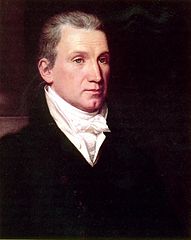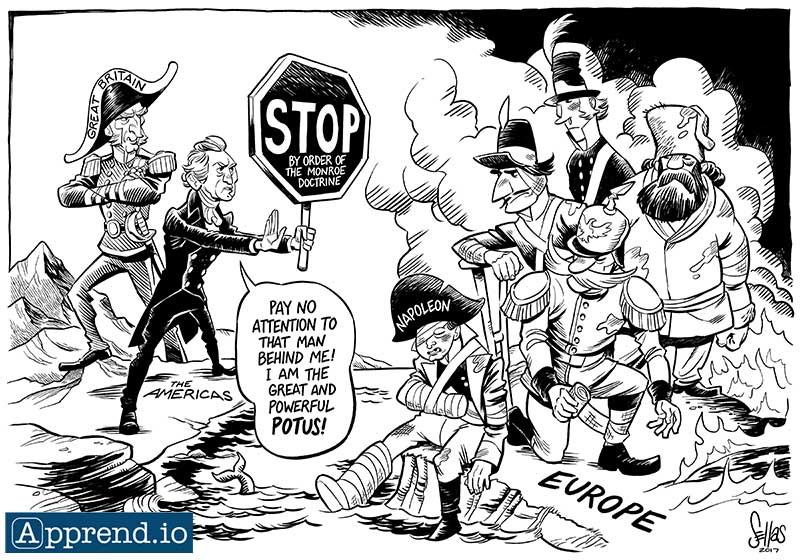
James Monroe introduced the Monroe Doctrine in 1823. The doctrine established the foreign policy of the United States regarding the Western Hemisphere for many years to come.

President James Monroe
by William James Hubbard
The Monroe Doctrine had two major points.
1) That the United States would not allow European countries to start new colonies or to interfere with independent countries in the continents of North America or South America.
2) That the United States would not interfere with existing European colonies nor get involved with conflicts between European countries.
Why did President Monroe establish this new doctrine?
Many countries in South America had just gained their independence from European empires such as Spain and Portugal. At the same time, with the defeat of Napoleon in Europe, Madison was afraid that European nations would once again try to establish power in the Americas. Madison wanted to let Europe know that the United States would not allow the European monarchies to regain power in the Americas.

Resource: https://www.ducksters.com/history/us_1800s/monroe_doctrine.php
Comentarios
Publicar un comentario